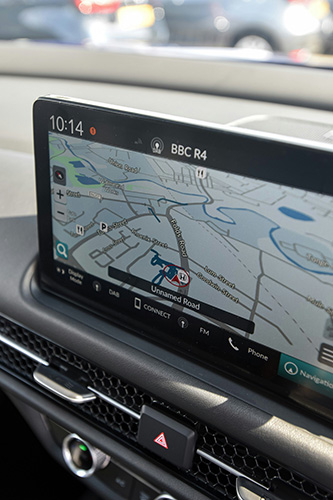To jumpstart innovation, legacy automakers need to emulate tech companies by embracing agility and rapid operational adaptability.
By Cameron van Orman, Chief Marketing & Strategy Officer and GM, Automotive Solutions
The automotive industry is experiencing what is arguably its biggest transformation since Henry Ford’s assembly line process revolutionized automotive manufacturing. Major car manufacturers are grappling with how to evolve in the wake of rapidly changing consumer preferences, evolving regulations, and the rise of disruptive technologies like electric vehicles (EVs).

Fierce competition amongst auto makers in the United States, China, and Europe is adding pressure to cut costs associated with EV production. Tesla and BYD are the only two automakers who have achieved financial success with EVs, while other EV startups and legacy brands are contending with the challenge of generating sustained profitability from their innovative market entrants. While working to ensure that their traditional combustion engine businesses remain profitable, legacy automakers are struggling to innovate given the enormous capital, talent, and process investment it requires.
To jumpstart innovation, global auto brands need to:
In today’s market, agility is no longer a ‘nice to have’ – it’s a requirement to manage volatility and outpace competitors. By improving time-to-market, increasing efficiencies, and reducing risks related to software development, legacy auto makers can position themselves to break away from the pack.
The success of agile transformation in the auto industry hinges on an organization’s ability to cultivate a culture of innovation and foster collaboration with tech partners. This culture shift needs to be spearheaded at the highest leadership level and tied directly to overall business goals. And as previously mentioned, there is much to be learned from tech companies who innovate at breakneck speed, but automakers are uniquely challenged to make this shift, compared to other manufacturers.
While automakers have over a century of manufacturing experience, software cannot be manufactured the same way cars are made and remain relevant and impactful to the market. By incorporating AI and a software-centric approach to innovation, auto makers could enhance their software development lifecycles to be more competitive and stay abreast of disruptive technologies like EVs. For example, in areas such as automated code generation and bug detection, machine learning can be used to analyze code to identify bugs and potential resolutions, and for autonomous driving systems, AI-enabled real time decision making can process vast amounts of data from sensors and cameras to improve navigational safety.
Lastly, by improving coordination with existing and new suppliers and upskilling its workforce (a critical component for innovation), automakers can better navigate adopting and implementing rapidly evolving technology. For traditional auto makers, their biggest obstacles for speed and ROI are existing internal operating models, outdated mindsets, and operational silos.
The surge in digitization in the automotive industry is reshaping customer experiences and revolutionizing business models, creating novel revenue streams in the digital ecosystem of vehicles. Autonomous driving, data sharing and security, and advanced safety features tied to regulatory compliance are becoming ubiquitous in the automotive space. The emergence of software-defined vehicles (SDVs) is at the core of the industry’s dynamic nature, further intensified by new regulatory demands, unpredictable supply chains, and diversified competition.
My company, Planview, has found that the four core challenges in the software development lifecycle that must be addressed and reimagined are remediation of technical debt, scalability and speed, improving strategic decision-making, and risk reduction.
With those challenges in mind, automakers must:
Clearly, the auto industry has come a long way since 1913 when Henry Ford incorporated the conveyor belt, a tool known at the time for its use in slaughterhouses, into the world’s first system to mass produce cars at his plant in Highland Park, Michigan. Over a century later, the digital automotive revolution is transforming the way we think about transportation and creating an array of new and exciting opportunities for auto makers.

About the Author:
Cameron van Orman is responsible for the development and calibration of Planview’s corporate strategy and driving alignment from strategy to delivery to outcome realization. He is also responsible for all aspects of Planview’s global marketing, digital demand generation, and customer marketing. Cameron has more than 25 years of enterprise leadership experience driving transformational change, business agility, and market growth.
Scott Ellyson, CEO of East West Manufacturing, brings decades of global manufacturing and supply chain leadership to the conversation. In this episode, he shares practical insights on scaling operations, navigating complexity, and building resilient manufacturing networks in an increasingly connected world.